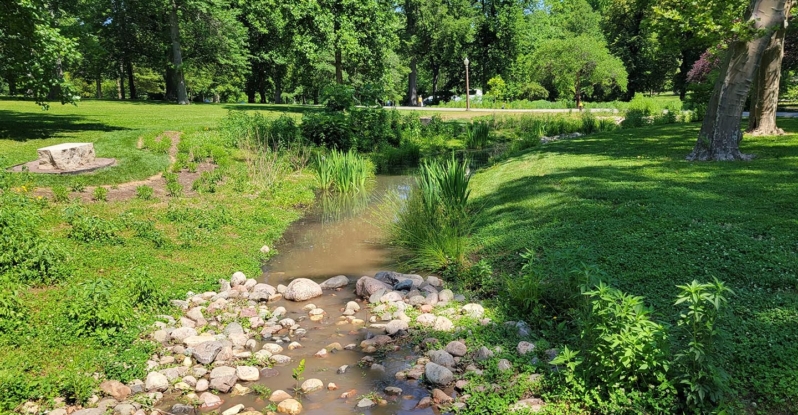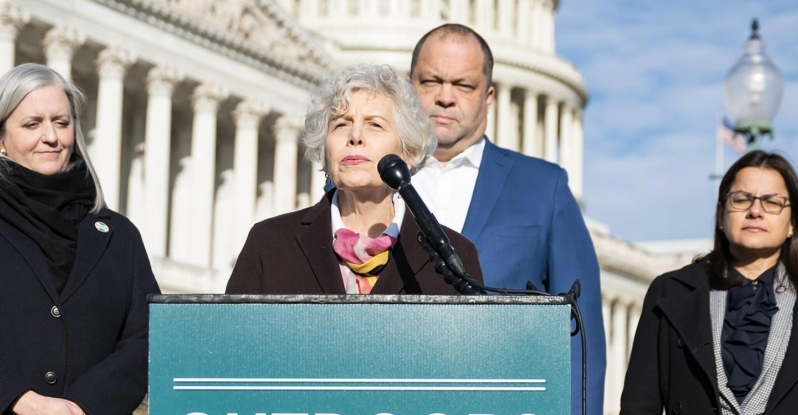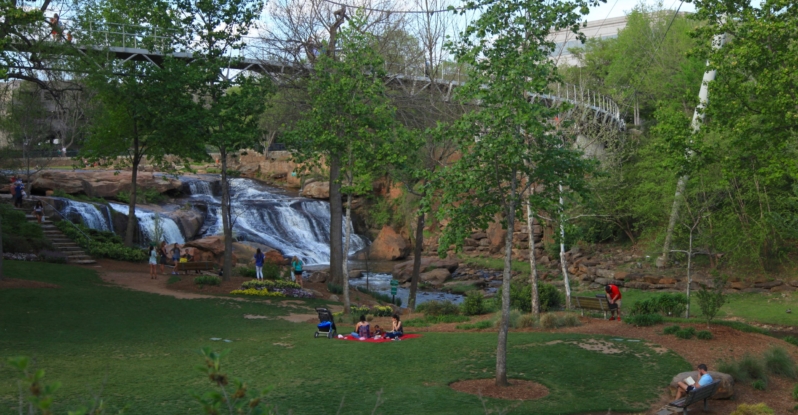Originally published at Voices of the Governing Institute.
As we talk about rebuilding our infrastructure, we need to remember that parks are as important to our cities as roads and bridges.
The new presidential administration has signaled a strong desire to rebuild our infrastructure, especially in our cities. This is sparking a renewed and welcome national conversation on how to make that happen. But along with roads, rails, bridges, and water systems, let’s remember the profound role that city parks play as a necessary ingredient in those plans. Urban parks are not luxuries; they are essential infrastructure for 21st-century cities.
Nearly 80 percent of Americans live in urban areas. Increasingly, many of our cities are challenged by aging water and transportation systems that are nearing or exceeding their designed capacity. Complicating the picture, a new focus on environmental resilience to flooding and other natural disasters is driving city planners to more strongly consider “mixed-use” infrastructure. Urban parks are the very definition of mixed use.
So strong is the case for urban parks in America’s future that the bipartisan Mayors for Parks coalition wrote a letter to the Trump transition team calling for parks to be prioritized among its infrastructure plans. These mayors and other leaders at the municipal, state, and federal levels know that community parks can grow local economies and attract businesses, workers, and investment. And numerous studies have shown that the presence of a nearby park adds 15 to 20 percent to residential and commercial property values.
That’s not all. Investment in mixed-use infrastructure projects — those that include both parks and green space — is building a strong track record of leveraging public funds with private capital to address many of our most vexing urban challenges, including those relating to transportation, stormwater management, and access to recreation. Beyond the economic and environmental benefits of mixed-use infrastructure, there are the well documented human health benefits of proximity to nature. Studies show that people exercise more if they have access to parks, and including nature in the built environment improves quality of life and sense of community.
The outcome of this renewed emphasis on city parks is remarkable. The Historic Fourth Ward Park and Reservoir in Atlanta is a prime example of what is possible. Atlanta’s Department of Watershed Management saved $16 million by constructing a water-retention pond to mitigate flooding, rather than tunneling and installing a single-use network of pipes to deal with the problem.
The park is one of many that are linked to the Atlanta BeltLine, which has been described as the most comprehensive transportation and economic development effort ever undertaken by the city. This visionary project includes a 22-mile network of parks and trails connecting 45 neighborhoods and providing new transportation options. The park and the nearby Ponce City Market have attracted an additional $600 million in commercial investment and residential construction. Quality of life has surged, and community services have improved dramatically.
Atlanta is not alone. Over the next quarter-century, Philadelphia’s Green City, Clean Waters program will invest $2 billion in parks and green infrastructure to capture 85 percent of the city’s stormwater runoff. The program not only will lead to green jobs but also will save billions that would otherwise be spent on underground pipes and tunnels. And Philadelphians will enjoy beautiful parks for decades to come.
While city parks are a clear win for everyone, they are not a new cause. For three years running, the U.S. Conference of Mayors has had the foresight to adopt resolutions calling for permanent and full funding of the federal Land and Water Conservation Fund, whose goal is to conserve land and improve outdoor recreation opportunities nationwide and to emphasize parks in comprehensive urban policy and community development.
Americans are taking note. In poll after poll, voters agree that fixing our aging transportation and water infrastructure is a priority. As the new Trump administration promises to deliver infrastructure investment, parks deserve a prominent place in the mix of options to help revitalize our urban communities.
This summer, from July 29 through Aug. 2, more than 1,000 global park leaders will gather at the Greater & Greener 2017 conference in Minneapolis and Saint Paul to explore the power urban parks have to support healthy, resilient and sustainable cities.
 About the Author
About the Author
Catherine Nagel is the executive director of City Parks Alliance and has led the organization for fifteen years, growing the nonprofit organization from its inception to an internationally recognized learning and advocacy network. Read Catherine’s full bio here.

 About the Author
About the Author

